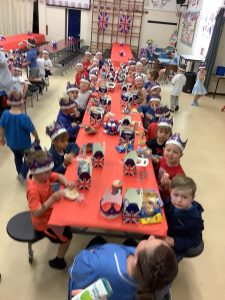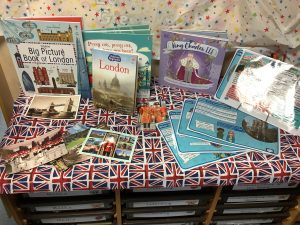History Lead – Mrs Spittlehouse

Two year plan History 2024 25 26
Whole School History Geography Plan 2025 26
Progression in History Y1 – y6
History Intent
Our History curriculum at Saints Peter and Paul’s aims to offer a high-quality history education that will help pupils gain a coherent knowledge and understanding of Britain’s past and that of the wider world. It should inspire pupils’ curiosity to know more about the past. Teaching should develop learning which results in the acquisition of knowledge and skills which enables children to enquire, research and analyse in History. Children will know more, remember more and understand more. History helps pupils to understand the complexity of people’s lives, the process of change, the diversity of societies and relationships between different groups. It also helps children gain a sense of their own identity within a social, political, cultural and economic background.
Implementation
How History is taught at St. Peter and Paul Catholic Primary School:
Our History curriculum aims to excite the children and allow them to develop their skills as historians.
History is taught following the National Curriculum Programme of Study. It is taught in blocks throughout the year, so that children achieve depth in their learning. Two History topics are covered each year within KS1 and additional History is also taught through Literacy. Within KS2, History is taught three times a year discreetly and additionally through other subjects such as Literacy. Topics are taught one afternoon per week, across a half term. History topics focus on developing historical knowledge, understanding, skills and vocabulary.
The history curriculum has been carefully built. Full consideration has been given to ensure progression of key knowledge, skills and vocabulary, across topics throughout each year group, across the school. Consideration when developing and organising the curriculum was also given to the wider learning opportunities available in Literacy to enable the best outcomes for learners.
Topics have been organised on a two year cycle due to mixed age classes.
Within Key Stage 1
Pupils should develop an awareness of the past, using common words and phrases relating to the passing of time.
They should know where the people and events they study fit within a chronological framework and identify similarities and differences between ways of life in different periods.
Within Key Stage 2
By the end of Year 6, children will have a chronological understanding of British history from the Stone Age to the present day. They are able to draw comparisons and make connections between different time periods and their own lives. Interlinked with this are studies of world history, such as the ancient civilisations of Greece and the Mayans. Strong links between the History curriculum and Literacy lessons enable further or additional learning.
We encourage regular references to timelines and how topics fit together as well as a hands-on approach involving artefacts. Outreach programmes/inviting people into school or focus days are encouraged where appropriate so as to bring history alive to our young learners.
Within Early Years
Within Early Years History is taught through Understanding of the world. Understanding the world involves guiding children to make sense of their physical world and their community through opportunities to explore, observe and find out about people, places, technology and the environment
https://assets.publishing.service.gov.uk/government/uploads/system/uploads/attachment_data/file/596629/EYFS_STATUTORY_FRAMEWORK_2017.pdf
Impact
We use both formative and summative assessment information in every history lesson. Staff use this information to inform their short-term planning. This helps us provide the best possible support for all of our pupils, including the more able. The assessment milestones for each phase have been carefully mapped out and further broken down for each year group. This means that skills in history are progressive and build year on year.
Teachers use, history formative assessment grids, to systematically assess what the children know as the topic progresses and inform their future planning. These formative assessment grids then inform summative assessment judgements for each topic.
Assessment information is collected at the end of each topic. Teachers identify which children are working below, working towards, working at and greater depth against key objectives for each topic. This information in transferred onto subject spread sheets and from here we can analyse number of children achieving at each level. Plus, looking at groups of children e.g. boys v girls. This process provides an accurate and comprehensive understanding of the quality of education in history. A comprehensive monitoring cycle is developed at the beginning of each academic year. This identifies when monitoring is undertaken. Monitoring includes: book scrutinies, lesson observations and/or learning walks, pupil voice and staff voice.
All of this information is gathered and reviewed. It is used to inform further curriculum developments and provision is adapted accordingly.
The impact and measure of this is to ensure that children at Saints Peter and Paul are equipped with historical skills and knowledge that will enable them to be ready for the curriculum at Key Stage 3 and for life as an adult in the wider world.
- Children will know more, remember more and understand more about History.
- Children will understand and use the key skills of chronological understanding, Knowledge and understanding of events in the past, Historical interpretation, Historical enquiry and organisation and communication.
- The large majority of children will achieve age related expectations in History.
- As historians children will learn lessons from history to influence the decisions they make in their lives in the future.

